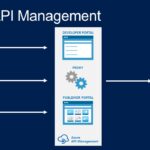What is a leadership development framework?
A leadership development framework describes what leadership should look like within an organization. It can be thought of as a set of principles that define the way in which a manager should lead their teams, as well as the competencies and skills they should possess.
When it comes to defining this leadership framework though, there’s no one-size fits all approach. Instead, this framework needs to be aligned with your strategy and the culture you’re trying to create.
The foundation of all best practices firms’ leadership development systems is a model of leadership competency. If you opt to establish a leadership model internally, we advocate using a competency dictionary or card deck (which reflects a number of common competencies), members of the leadership development council, and a knowledgeable and trained facilitator as a starting point.
The framework establishes uniform and useful criteria for managers, empowering them to handle day-to-day difficulties and meet the demands of customers, co-workers, and communities in the dynamic environment of the global market. It is a concept that, in a nutshell, helps business leaders build future leaders within a company and has a significant impact on succession planning.
Developing a leadership framework for future leaders involve the following steps:
Step 1: Sorting competence list
To arrive at the core seven to ten competencies that the team determines as the most important ones in enabling leaders to deliver required outputs, the team must first narrow the entire competency list based on the previous identification of the leader’s future outputs (through a card sorting process).
Step 2: Describe your capabilities
Describe the knowledge, abilities, and behaviours that are unique to your company that goes along with each competency. This stage makes sure that the definitions and descriptions of the supporting competencies appropriately describe how a top performer displays that competency inside the organization.
Step 3: Create a rating system
Each competency should have a rating scale that distinguishes between the various degrees of proficiency at which it is demonstrated. The aim in this step is to create dimensional behaviour anchors that are obvious, explicit, dependable, and fit each point on the rating scale.
Step 4: Make a matrix workbook
List the competencies (one competency per column) across the top and the outputs (one output per row) in the far-left column.
Step 5: Matrix filling based on criticality
Talk to the team about how important the first competency is for producing each of the outputs, starting with that competency. On a scale of 1 to 5, where 1 represents unnecessary and 5 represents critical, rate its importance. For each of the selected competencies, repeat this approach.
Step 6: Completing the matrix
When the matrix is complete, there should be at least one 5 in each row and each column. If not, review the chosen competencies or outputs and reconsider your decision.
Step 7: Finish the model in a visual format
The final stage is to graphically represent the capabilities in a model that will be disseminated throughout the organization if you are certain that you have determined the competencies that are most essential in delivering the better quality outputs required to execute the future business strategy.
Keep your attention on the prize
You may start building a framework that will enable you to accomplish your intended goals by concentrating on what you want to accomplish and the culture you want to develop. Also, the goal or purpose of your organisation should serve as the foundation for your leadership style.
Determine the needed leadership skills
What traits, abilities, and actions are required in your leaders in order to create the kind of workplace culture you want and, ultimately, achieve your organisational objectives? Be as straightforward as possible. Complex frameworks, with nested, incredibly comprehensive competency models that are frequently out of date as soon as they are formed, rarely provide organisations with the best results.









